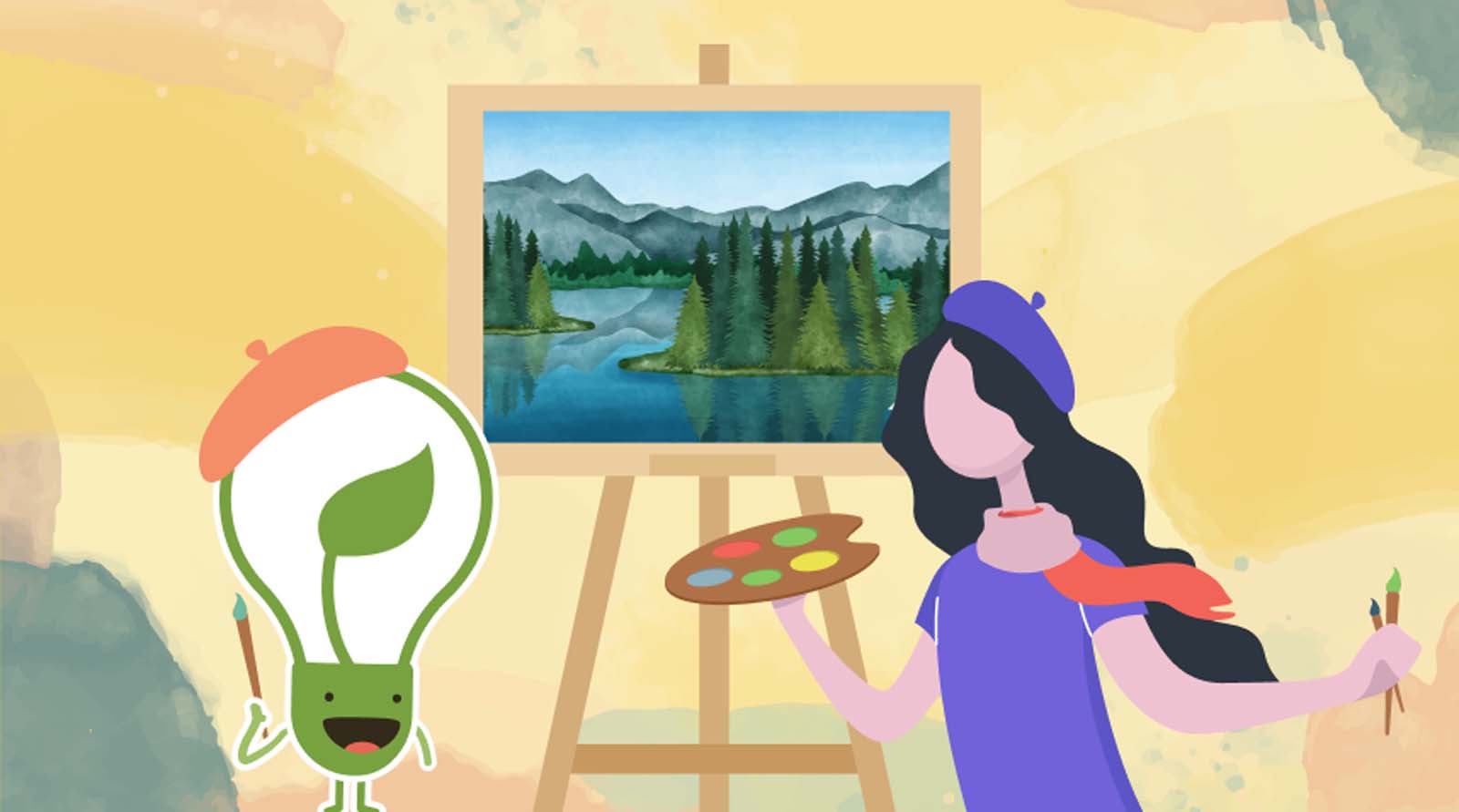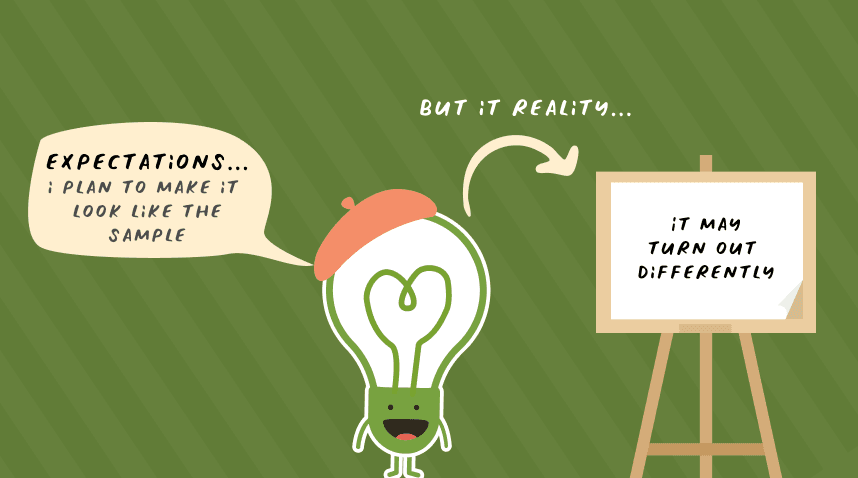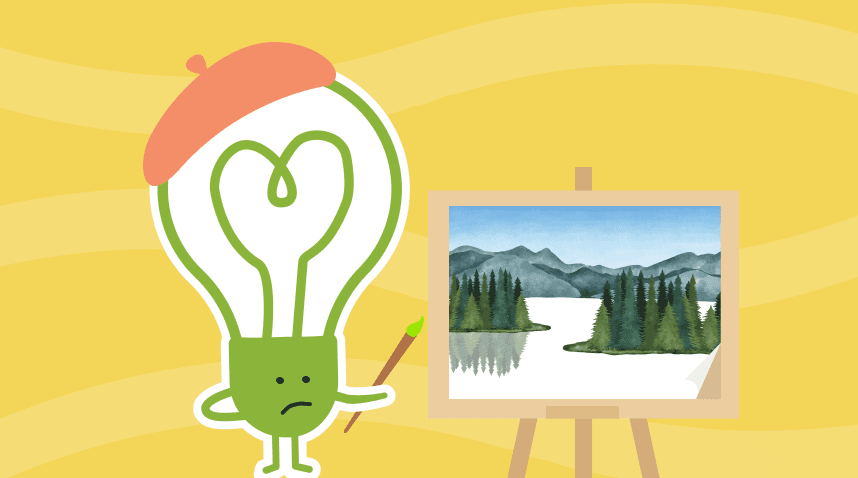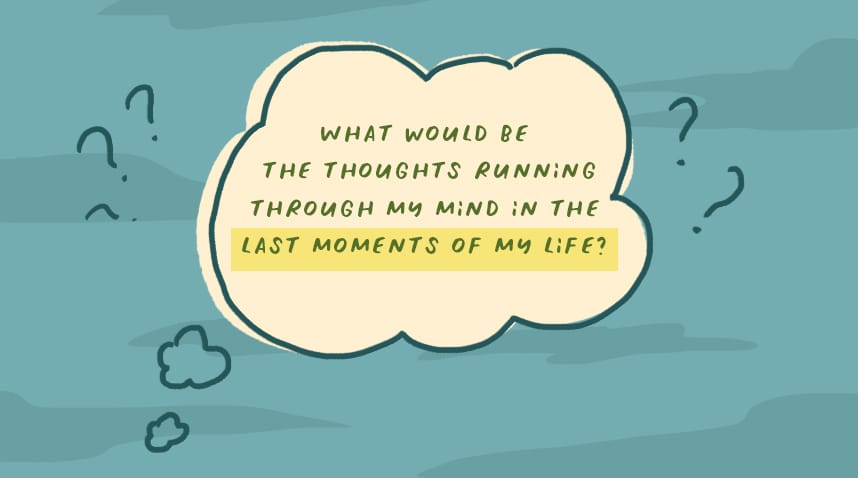
‘What hours of art jamming taught me about life and our place in it’
TLDR: There are lessons hidden under any experience. Have you ever thought of going through life like a painter working on his/her painting?
Recently, I picked up a new interest to embrace a slower life pace. Registered for acrylic painting for adult beginners, I went to first class with an open mind, even though I couldn’t draw a proper stickman for that matter 😅
While the first painting I created was not exactly something I am comfortable showing around, I may have gotten a hang of the process for now.
“So what has painting got to do with internal/spiritual growth?” You may wonder.
These are a few things I learned from the couple of lessons I have attended:
There is a sample picture for reference, but everyone’s painting will be different
A sample picture is given for each class to guide amateur painters like me. Similar to journeying life, we learn from others who have lived before us.
Intriguingly, the painting process mirrors the defining steps in expressing one’s autonomy in face of the reference picture: Do we choose more vibrant or darker blue for the sky? Do we place the trees closer together or further apart?
Even when the person paints the same composition again, the result may be different. It is impossible and unnecessary to make a carbon copy out of somebody else’s art and life.
A painting can be completed in two hours or ten hours; depending on how much effort we consciously give and how much detail we enrich onto the canvas. The time spent and the number of stages completed are subjective to the person going through the experience.
Feeling unsatisfied, I may continue trying to ‘fix’ the painting. Often, it might be better to stop trying to fix something and continue to the next step. When I return to that troubling area again eventually, it may have blended into the overall painting.
We decide individually if we have done enough to our best ability – whether we are satisfied or whether more could be done. There isn’t a fixed stop line.
I can draw a frame of the expected result, though it may not turn out that way

All the students sketched the initial composition for their paintings: light and shadow, trees’ form, pathway’s lines. Multiple adjustments to the original sketch were made throughout the session.
When the tree’s form looked odd, I enhanced the tree size to match the distance proportion. When the shadow didn’t look natural, I added shades of blue or white.
This is closely akin to life in general: I can plan how I would like my day to go, though it may unfold differently many times.
I may have to adjust accordingly, for example, starting a meeting later when the train is late, choosing another restaurant when the one chosen has a long queue, etc.
These adjustments do not mean that part of the day is ruined. The day is just how it needs to be. Like scaling tree size for a more proportionate painting, holding things lightly and making adjustments as needed makes a peaceful day.
When I want to correct a part of the painting, I need to recall which colours I had used to recreate the same colour mix
Even after several sessions, I still find it difficult to recreate blended colours. Throughout the session, mindfulness and keen observation of my actions were required to recall which green and how much of green I’ve mixed into the blue to get colour for the background.
Making mistakes and corrections are part of life. It may be helpful to reflect on what had been done previously to make restorative actions or even to pick up from where I feel I took the wrong turn and follow a different direction from there.
Nature is not symmetrical; the imperfect strokes are what makes nature paintings beautiful

I enjoy the symmetrical look of buildings and architecture for the clean and tidy vibes. This preference sneaked unconsciously into my painting classes.
I still remember having asked my art teacher during the first lesson, “Why does my flower field feel odd?”
Her answer: “It is too planned. Too symmetrical. And nature is not that way.”
That need for orderliness was just the tip of a ‘perfectionism’ iceberg. I’m aware of the many times I stare at the canvas or the times when I hold back my brush just before it touches the canvas, thinking “What should I do next?”
Such hesitance is not unlike many decision-making situations I have been in. Worried about making the wrong decision, I revisited my thought process to ensure I cover all angles before actually setting course. While it is essential to do my research and decide carefully, I often find myself ruminating longer than necessary before taking action.
When I spent more time hesitating in class, I fell behind in the subsequent steps and eventually just rushed along to complete the class.
As the serial late-finisher among the students, I was still not yet fully satisfied with the result!
I have learnt to pace myself for more balanced efforts in each stage of painting and it has worked quite well now.
Wanting to follow society’s commonly accepted ‘rules’ to make the ‘perfect’ choices, I gave myself an unreasonable amount of pressure. Through painting, I learned that life is imperfect.
As much as I’d like it to be ‘perfect’, there are many areas beyond my control that could look better with imperfection – like nature’s asymmetry
The full picture can be seen clearer from a distance

When I’m deeply immersed in class, I can see every single stroke up close: colour gradients and shapes that can look unusual from some angles. A comment will arise in my mind “This looks odd. It’s not as nice as I’d like it”.
The teacher then reminds me to stand back, view the painting from a distance or even look at it through my mobile phone’s camera. I often realise the colours and shapes gel in well as a whole with this view.
I recall the times at work or in my personal life when I was deeply entrenched in the situation that I forgot that in the grander scale of things, the conflict was not the most important thing.
The few times I managed to catch myself getting too entangled in my position/view in the disagreement, I took a breath and a step back. It helped to diffuse the tension I was feeling and loosen the grip of my perspective.
Thanks to the painting experience, I learnt the usefulness of taking a step back and catching my breath.
Learning from Painting
These are the few lessons I gathered from my painting lessons, not only the painting skills but also general life lessons 😊 I am glad I registered for them and I look forward to more learning opportunities.
I hope this sharing would encourage others to pick up new/old interests that have been put off due to ‘life demands’.
And who knows, there could be hidden lessons underneath the activities or at the very least, an additional experience for a richer life?
Wise points:
- There are life lessons in mundane activities, we could be pleasantly surprised if we are aware and remain open to seeing what we can learn
- Like painting, lift the tendency to control every single stroke/action. The result may be a positive one
- When we are immersed too deeply in the situation, it may be helpful to take a step back and assess it from a distance




